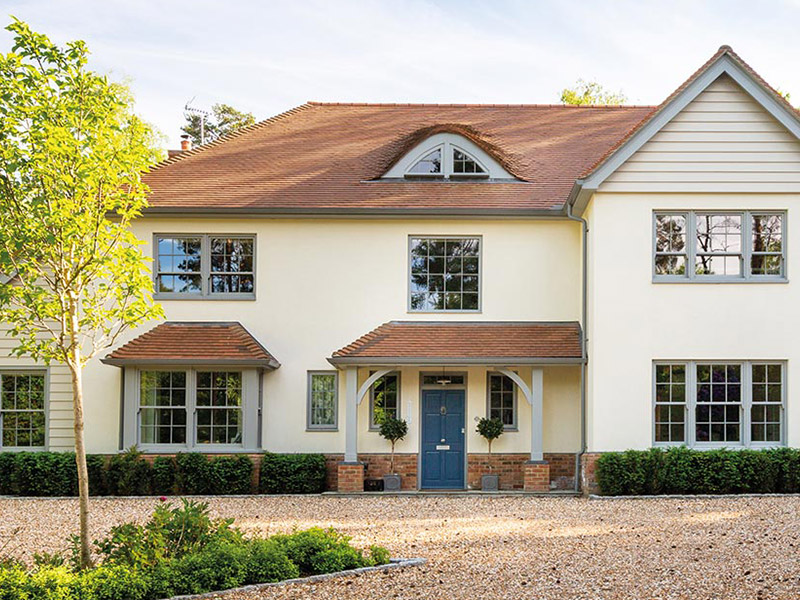Double glazing, a widely adopted technology in modern construction and renovation, has revolutionized the way we think about windows and energy efficiency in buildings. This article delves into the science behind double glazing, its benefits, applications, and considerations for homeowners and builders alike.

Understanding Double Glazing
Double glazing refers to the use of two panes of glass separated by a space that is typically filled with an inert gas, such as argon or krypton, to enhance thermal insulation. The two panes create an insulating barrier that reduces the transfer of heat between the interior and exterior of a building. This technology is particularly effective in climates with extreme temperatures, where maintaining a stable indoor environment is essential for comfort and energy efficiency.
The construction of double-glazed windows involves the following components:

- Glass Panes: The outer and inner panes of glass can vary in thickness and type, including low-emissivity (Low-E) glass, which reflects heat back into the room while allowing natural light to enter.
- Spacer Bars: These are the materials that hold the two panes apart and can be made from aluminum or more thermally efficient materials like warm edge spacers.
- Inert Gas Fill: The space between the panes is often filled with argon or krypton gas, which has a lower thermal conductivity than air, further improving insulation.
- Sealant: A durable sealant is used to prevent moisture and air from entering the space between the glass panes, ensuring that the insulating properties remain effective over time.
How Double Glazing Works
The effectiveness of double glazing lies in its ability to minimize heat transfer through conduction, convection, and radiation. When heat attempts to escape from the interior of a building, it encounters the first pane of glass, where some heat is reflected back into the room. The space between the two panes, filled with inert gas, acts as an additional barrier, reducing the amount of heat that can escape. The second pane of glass further reflects heat, thereby enhancing the overall thermal performance of the window.
Moreover, double glazing also helps in reducing noise pollution. The air gap between the two panes acts as a sound barrier, significantly diminishing the transmission of sound waves, which is particularly beneficial in urban environments or near busy roads.
Benefits of Double Glazing
- Energy Efficiency: One of the most significant advantages of double glazing is its ability to improve a building's energy efficiency. By reducing heat loss in winter and keeping cool air inside during summer, double glazing can lead to substantial savings on heating and cooling costs. The Energy Saving Trust estimates that double glazing can save homeowners up to £110 per year on energy bills.
- Comfort: With improved insulation, indoor temperatures remain more stable, leading to enhanced comfort for occupants. Reduced drafts and cold spots contribute to a more pleasant living environment, particularly in colder months.
- Noise Reduction: As mentioned earlier, double glazing provides excellent sound insulation, making it an ideal choice for homes located in noisy areas. The reduction in noise can significantly enhance the quality of life for residents.
- UV Protection: Double-glazed windows with Low-E glass can block up to 99% of harmful ultraviolet (UV) rays from the sun. This protection helps prevent fading of furniture, carpets, and artwork, prolonging their life and maintaining the aesthetic appeal of interiors.
- Increased Property Value: Homes equipped with double glazing are often more attractive to potential buyers. The energy efficiency and comfort provided by double glazing can enhance a property's market value, making it a worthwhile investment for homeowners.
- Environmental Impact: By improving energy efficiency, double glazing contributes to a reduction in greenhouse gas emissions. Lower energy consumption means less reliance on fossil fuels, which is beneficial for the environment.
Considerations When Choosing Double Glazing
While the benefits of double glazing are substantial, there are several factors to consider before making a decision:
- Initial Cost: The upfront cost of installing double-glazed windows can be higher than single-glazed options. However, the long-term savings on energy bills and increased comfort often justify the investment.
- Installation Quality: The effectiveness of double glazing largely depends on proper installation. Poorly installed windows can lead to air leaks and reduced insulation performance. It is essential to hire qualified professionals for installation.
- Maintenance: Double-glazed windows require minimal maintenance, but it is important to check the seals and frames regularly to ensure they are in good condition. Any damage can compromise the insulating properties of the windows.
- Aesthetics: Homeowners should consider the style and appearance of double-glazed windows, as they come in various designs and finishes. It is crucial to choose windows that complement the architectural style of the home.
- Local Climate: The benefits of double glazing can vary based on local climate conditions. In regions with mild climates, the advantages may be less pronounced than in areas with extreme temperatures.
Conclusion
Double glazing is a scientifically backed solution that offers numerous benefits, including energy efficiency, comfort, noise reduction, https://dgmnews.com/posts/common-pitfalls-in-diy-window-installation-in-watford/ and UV protection. As the demand for sustainable building practices grows, double glazing stands out as an effective way to enhance the performance of residential and commercial properties. While the initial investment may be higher, the long-term savings and benefits make double glazing a wise choice for homeowners looking to improve their living environment and reduce their energy footprint. As technology advances, we can expect further innovations in double glazing, making it an even more attractive option for future construction and renovation projects.







